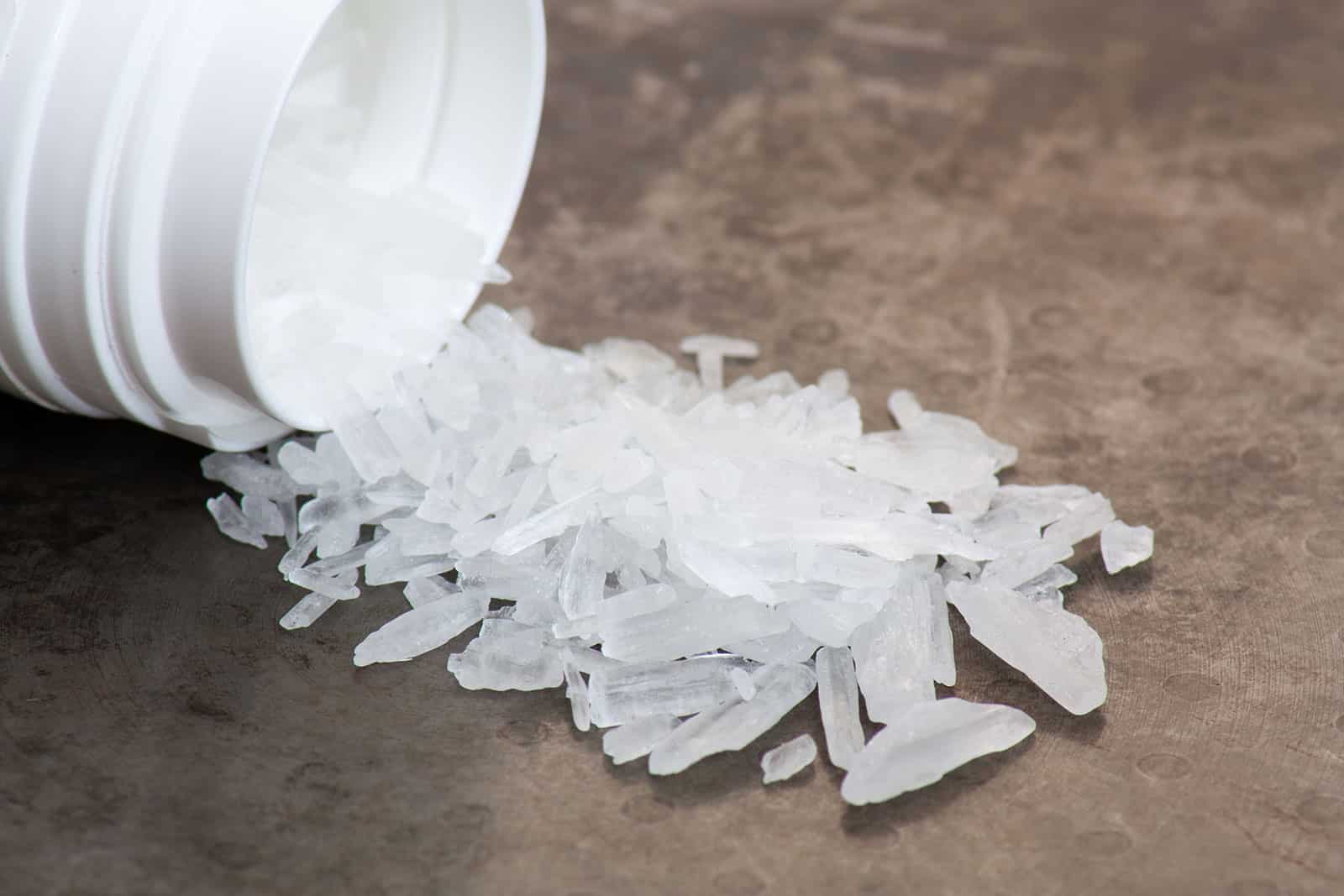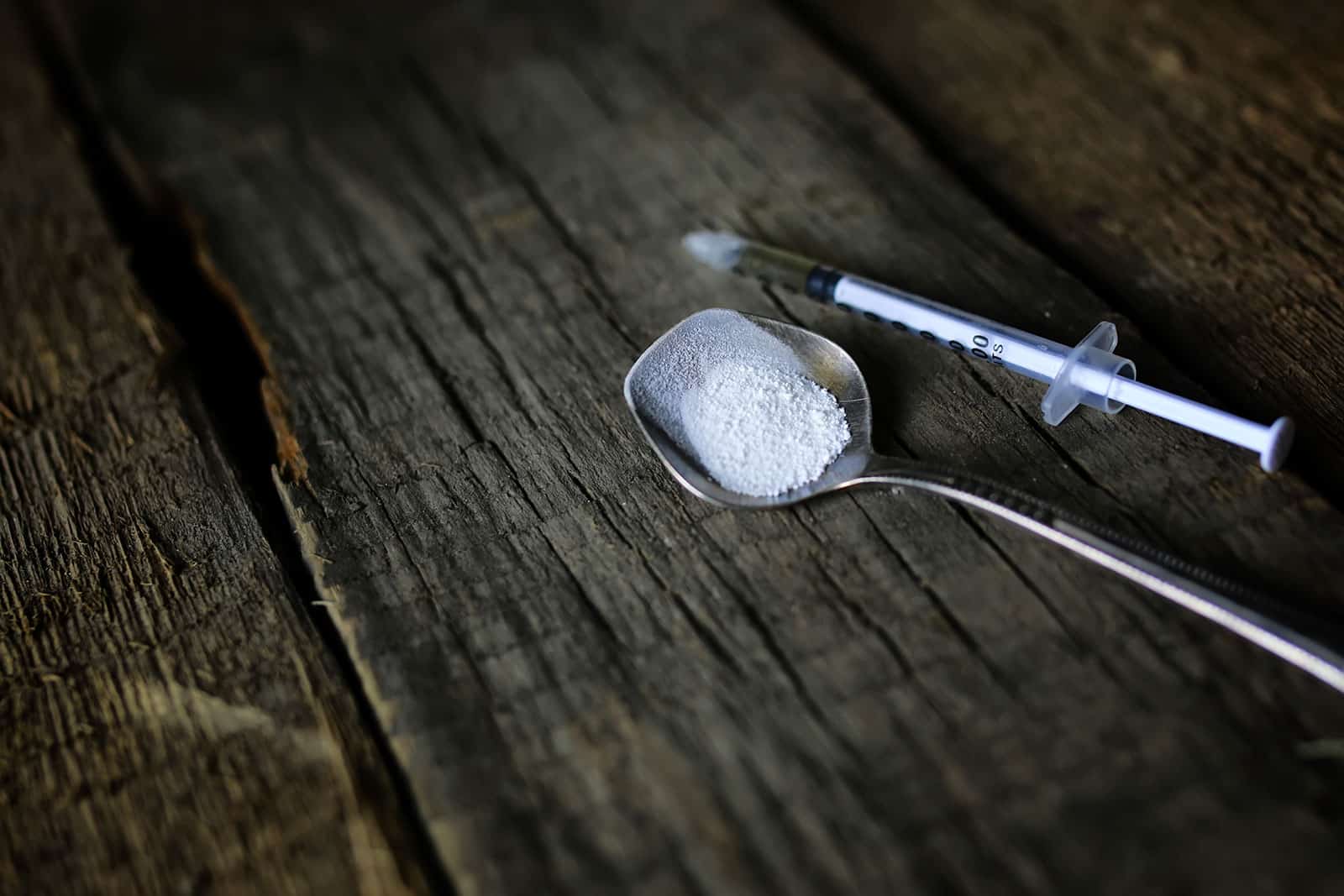It’s not always easy to know if a friend is using methamphetamine. There are several different types of meth and several different ways to use it. Regardless of the form it takes, the drug is highly addictive.
Meth is a member of the phenethylamine family of stimulants, entactogens, and hallucinogens. Physicians prescribed it under the brand name Desoxyn to treat ADHD and narcolepsy. The drug helps users to stay awake and remain alert.
Nevertheless, most meth use is recreational because the drug is so easy to get on the street.
There are also prescription medications like Adderall that are chemically similar to meth. Adderall is a combination of amphetamine and dextroamphetamine. It produces a kinder and gentler version of the high you get from meth.
Like meth, Adderall is prescribed for ADHD and narcolepsy. Like meth, Adderall is highly addictive.

Table of Contents
How Does Meth Make You Feel?
Depending on how much you take, this central nervous system stimulant can have a powerful effect on your body, mind, and spirit. It can make you feel all lit up inside like a Christmas tree.
Symptoms include increases in respiration, heart rate, blood pressure, and body temperature. Users may experience convulsions, stroke, cardiovascular collapse, or death at high doses.
How Is Meth Used?
Methamphetamine comes in powders, crystals, tablets, and liquids. It can be snorted, smoked, swallowed, or injected.
A recent study of past and present meth users revealed that 66 percent of people smoke meth, 24 percent have injected meth and 10 percent snort meth.
Half of the subjects used multiple ingestion methods, and seven percent used all four methods throughout active addiction.
Meth powder
Most street meth is sold as a bitter, white crystalline powder. Meth powder sometimes comes in colors like yellow-gray, orange, brown, and pink. However, most meth powders are either white or yellow-white. Street names for meth powder include crank, Mexican crack, redneck cocaine, and speed.

As a stimulant, meth powder can be combined with a depressant like oxycodone or heroin to produce a speedball. The two drugs are administered together or consecutively. Users claim that the speedball high is more intense and lasts longer than the high you’d get from either drug alone.
Meth powder looks like all the other drug powders. Short of testing it, there’s no way to know whether it contains buffers or psychoactive agents.
Crystal meth
Crystal meth is considered the crème de la crème of methamphetamines. It comes in shiny, chunky, bluish-white crystals that resemble ice shards, glass fragments, or rocks. It’s sold on the street as crystal, blade, glass, ice, shards, and quartz, and it’s expensive.

This meth has a higher concentration of pure methamphetamine than other drug forms. Although it’s usually smoked, crystal meth can also be heated into a liquid and injected.
Liquid meth
Powdered meth can become liquid meth simply by dissolving it in water. To turn the liquid meth back into powder, simply boil off the water until all that’s left is powder. Users get high by inhaling the meth-infused steam from the boiling water or by injecting the meth in liquid form.

Liquid meth looks like a clear liquid. It may have a faint tinge of color depending on its purity and what it was cut with. Once it becomes liquid, the meth is nearly impossible to detect.
Crystal meth labs
There’s nothing natural about crystal meth. It’s 100 percent synthetic. Unlike many substances, it’s not derived from a plant. Because it’s so easy to make, many users manufacture their own crystal meth supply in slapdash labs and survive by selling what they don’t use.

Meth labs are scary places. Almost 20 percent of them are only discovered after exploding or burning up. Nevertheless, they continue to pop up and keep cranking out crystal meth.
Methamphetamine manufacturing involves daily contact with unstable solvents, volatile chemical compounds, and toxic, hazardous waste. Working in a meth lab is a delicate occupation and a dangerous way to live.
Short-term exposure to the inside of a crystal meth lab can result in these symptoms:
- Shortness of breath
- Dizziness
- Chest pain
- Loss of coordination
- Cough
- Chemical irritation
- Burns on the skin, eyes, mouth, and nose
Scientists have learned from human and animal toxicity studies that the chemicals used to manufacture meth can cause long-term health conditions such as these:
- Miscarriages and infertility
- Birth defects
- Brain damage
- Kidney damage
- Liver damage
- Cancer
Effects of Methamphetamine
When you first take meth, you feel an instant and highly pleasurable rush that lasts for about 30 minutes. After the initial rush subsides, the high can continue for up to 14 hours. Onset and duration depend on how the drug was ingested.
A 2021 survey of past and present meth users revealed that almost 50 percent of the respondents used meth daily. Twenty-five percent used it several times per week. Here are some common pleasurable effects of meth:
- Increases energy, concentration, and focus
- Boosts stamina and helps users push beyond their limits
- Greatly reduces appetite
- Enhances sexual activity
Meth users routinely stay awake for days at a time while taking the drug. When a user finally stops using, it’s usually because they are completely drained of energy.
As a meth addiction progresses, users typically experience fewer pleasurable effects and more unpleasant side effects:
- Acne and skin sores
- Speech impairment
- Premature aging
- Meth mouth and rotten teeth
- Chronic sleep deprivation
- Seizures and convulsions
- Psychosis
- Memory loss and confusion
- Substantial weight loss
- Droopy facial skin
- Sudden violent behavior
- Intense scratching
- Irritability and depression
- Stroke
- Death
Overdosing on meth can cause internal overheating, heart attacks, organ failure, and death.
Signs of Methamphetamine Abuse
Methamphetamine increases dopamine levels in the brain’s reward system. Dopamine makes us feel good. Drugs that make us feel good are incredibly addictive.
Meth repeatedly floods the brain with dopamine, and that can cause chronically imbalanced brain dopamine levels. Over time, the imbalance can cause meth users to develop memory problems, visual impairment, and trouble learning new motor skills.
For some users, meth can trigger a psychotic episode. The psychosis might be peppered with auditory and visual hallucinations, delusions, paranoia, and irritability. Meth-induced psychosis can make users frantically scratch themselves because they feel bugs crawling under their skin. Meanwhile, the scratching and picking cause skin lesions, abrasions, and rashes.
Meth users can experience periods of insomnia lasting from three to 15 days. It’s called tweaking, and it refers to a nonstop meth binge. The most dangerous effects of meth typically emerge while a user is tweaking.
Some users develop rapid eye movements that are clearly visible when facing the user. The person might talk in a disjointed manner and walk with a jerk. Violence and criminal behavior usually occur while a user is tweaking.

What Does Meth Look Like in Your Home?
The most apparent indication of meth in your home is meth paraphernalia:
- Pipes made with empty ink pens, broken light bulbs, or plastic drinking straws
- Needles, syringes, and spoons
- Lighters
- Sandwich baggies
- Loose razor blades
- Tin foil packets and aluminum cans
- Mirrors with straight scratch marks from chopping meth
- An elastic lanyard to prepare veins for injection
A minuscule amount of meth pipe residue is all you need for a meth test. Tests are available at pharmacies and discount outlets like Walmart.

Tweaking and withdrawal symptoms
A person who is tweaking clearly has a meth addiction. When the drug is discontinued, a variety of short-term withdrawal symptoms typically appear. Your doctor can prescribe something to ease the discomfort; at first, you might sleep between two and four days at a time. Things quickly improve, however. Short-term withdrawal symptoms only last for a couple of weeks:
- Monumental brain fog
- Dry mouth
- Dehydration
- Headaches
- Muscle pain and spasms
- Intense cravings
- Colossal fatigue
- Anxiety, paranoia, and hallucinations
Some people have long-term meth withdrawal symptoms:
- Ongoing cravings
- Irregular sleep patterns
- Fuzzy brain syndrome
- Anxiety and depression
We invite you or a loved one to experience firsthand how good it feels to be clean and sober. Come visit us at Allure Detox in West Palm Beach.
FAQ
What is the methamphetamine pill called?
Published on: 2022-08-13
Updated on: 2025-06-05



